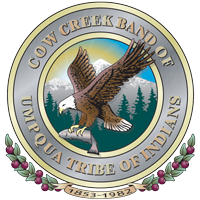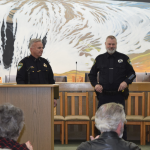A Bright Future for West Fork Cow Creek Watershed
This article is featured in the April 2022 edition of the Cow Creek Tribal newsletter. Tribal members can also access newsletters online anytime, or browse past editions by clicking here. (Tribal login required to view newsletter archive)
Forestry and Natural Resources have spent years working and coordinating with other agencies to bring new life to the West Fork Cow Creek watershed.
West Fork Cow Creek holds special environmental value in the region, having been identified by the local Bureau of Land Management as a Coho Critical Habitat. It’s also home to steelhead, other species of trout and Pacific lamprey. Along with the Cow Creek Tribe and other stakeholders, multiple agencies worked together over the span of years to rehabilitate the natural spawning grounds for native fish.
The West Fork Cow Creek watershed is uniquely situated in a remote area of Cow Creek ancestral lands, crossing very few landowners’ properties and even fewer infrastructure impediments. It made for a perfect project for state and federal agencies to work together on. But terrain was a difficult hurdle for teams, requiring helicopters and other specialized equipment in some areas to complete the work.
Decades of harmful logging practices, fires and invasive species had eroded the natural state of the watershed, damaging the sustainability of fish to thrive in the area.
Over the course of the years, the agencies involved in the project came together to form a collaborative, mapping out the plan for each phase of restorative work. Some areas of the watershed would be easier to rehab, while others needed specialized work and a heavier allocation of funding.
One of the most effective ways teams found they could help restore spawning areas in the watershed was to fell certain trees directly into the creek and streams. In some places, boulders also created additional channels and protected areas for spawning grounds. A stretch of Elk Valley Creek required 500 logs dropped into the watershed. Bolivar Bridge required an entirely new culvert to be dug and replaced to allow fish to swim upstream.
The Cow Creek Natural Resources Team has created an online StoryMap to commemorate the West Fork Cow Creek collaboration project. The StoryMap includes pictures, videos and before-and-after images of the watershed and completed work.





